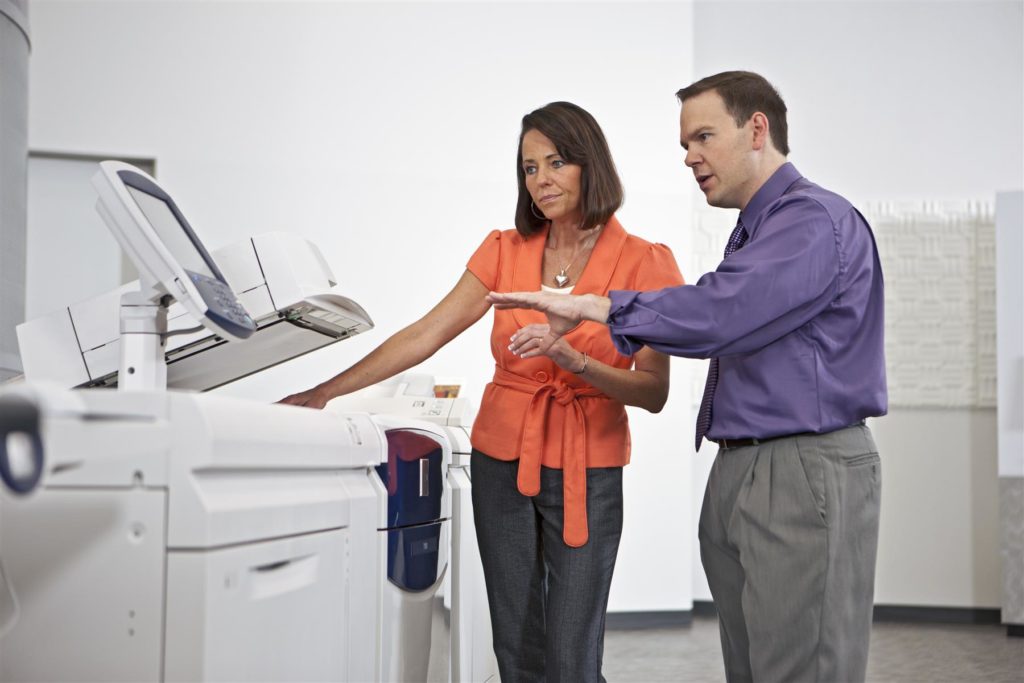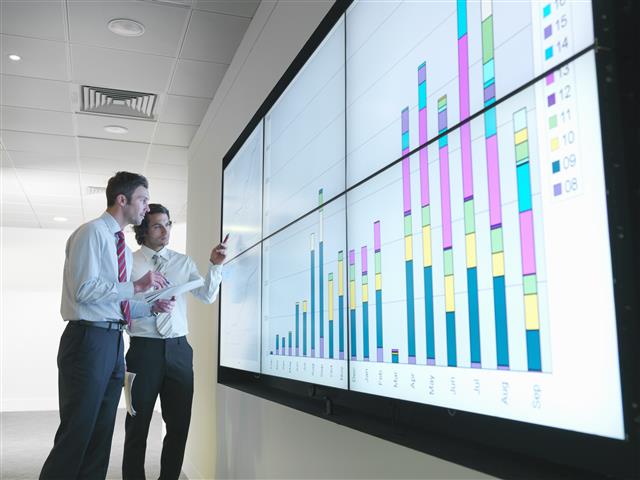 When you’re running a busy print shop, it’s easy to be so focused on getting the work out that you don’t have the time to look at the bigger picture and ask some important questions.
When you’re running a busy print shop, it’s easy to be so focused on getting the work out that you don’t have the time to look at the bigger picture and ask some important questions.
How has the market changed? Are you keeping up or falling behind? How do you stack up against the competition? Does your business model still make sense? Where will you be in a year – or five years?
Often, the answers to these and other questions come down to the technology you’re using. After all, you’re only as productive, efficient and competitive as your press(es). And if you haven’t upgraded in the last few years, you may be missing out on new business, or new opportunities with existing clients.
Let’s look at four signs indicating it may be time to upgrade your print technology.
1. You’re selling on price
In recent years, there’s been a lot of downward price pressure in the print market. The emergence of online print shops, with lower costs, bigger client bases and faster delivery times often means that you’re forced to compete on price.
You may be at risk if you’re doing a lot of labor-intensive, low-value work – jobs that could potentially migrate to the web. Online print shops’ high-volume, low-margin model means they can usually undercut you on price for this type of work.
But it’s not just online competition. Your competitors may also be selling on price to retain market share, forcing you to adopt the same strategy. That’s a race to the bottom that rarely ends well.
The answer is to differentiate yourself, offering value-added services that neither online nor offline competitors can match, delivering premium print jobs at premium prices. You could become a valued marketing partner – not just another print shop. In which case, the only thing holding you back is your technology.
2. Waste is eating into your profit margins
 Even in a perfect world, jobs go wrong. What matters is how often it happens, and how seriously it hits your bottom line. A good way to see the size of the problem is to look at the size of your waste-paper basket.
Even in a perfect world, jobs go wrong. What matters is how often it happens, and how seriously it hits your bottom line. A good way to see the size of the problem is to look at the size of your waste-paper basket.
If you’re using older technology, you may simply accept that this waste is normal.
After all, alignment, skew and magnification problems are just part of the process, you might tell yourself. The same goes for color density issues, which can sometimes mean you have to throw out a whole print job. Paper jams are frequent when you print on different stock, or when humidity increases and paper expands. Paper often isn’t cut straight, and blemishes are par for the course.
All of this soon adds up, and can seriously eat into your profit margin. But it’s not just the cost of the materials – it’s also the drop in productivity, the opportunity cost of lost jobs, and the hit your reputation takes as lead times are extended and deadlines missed.
Newer presses automate and simplify the processes that cause a lot of this waste. Automatic front-to-back registration, stock profiles that control paper temperature, and auto sheet clearing (to un-jam your press) are just some of the advances that make sure you keep waste levels low and productivity levels high.
3. You’re turning away work you could do
In the end, profitability and success come down to one thing: how fast you can get the work out. And your throughput is dictated by the limits of your technology.
Turning away work you know you could do – if only you had more hours in the day – is probably something you’re familiar with. But what choice do you have?
Print jobs take a long time to set up – especially complicated ones. Even repeat jobs sometimes take as long as the original, as all the parameters need to be re-entered. Heavier stock means running your press at lower speeds, which hits your productivity. All of which means you simply can’t get the work through fast enough to handle increased volumes and still meet client deadlines.
But you could with new print technology. Quicker job setup and saved workflows make repeat print runs easier than ever. Speeds of 60ppm on up to 350g stock mean you’re getting the work out at a rapid pace.
4. You’re turning away work you can’t do
Adding value is not just something you may have been thinking about. It’s probably also at the top of your customers’ wish list. Their expectations have been raised by an online world with endless choice, and they may increasingly be asking for things you can’t deliver.
Higher expectations mean more complexity, so perhaps they’re asking for new substrates like plastic/polyester, textile (such as linen or non-woven fabric), foil or promotional magnets. Or maybe they want complex jobs with many elements (foldouts, graphics, tabbed dividers, different stock, advanced finishes) that are beyond the capability of your press to produce automatically.
So you’re faced with a difficult choice: turn these jobs away, or take them on and watch your labor costs spiral and productivity drop as you resort to manual processes.
Older presses simply can’t handle these lucrative, high-value print runs easily and efficiently. Which is frustrating for you, because you know there’s more money – and job satisfaction – in this work.
The time to upgrade is now
As you can already see, there are lots of great reasons to upgrade. If you haven’t already done so, maybe it’s because you’re so busy you simply haven’t come up for air. Or maybe it’s because you think it’s going to cost too much.
If that’s the case, you’re missing out. Technology has advanced faster than most print shops realize, but costs a lot less than you imagine. Previously high-end features are now available as standard on entry-level presses.
Higher productivity and increased throughput mean the time to ROI is significantly shorter than with an older press. You could even add a second shift to make your new technology pay for itself faster.
 All of which makes the case for upgrading pretty compelling. Maybe now is the time to come up for air and take another look.
All of which makes the case for upgrading pretty compelling. Maybe now is the time to come up for air and take another look.
Want to learn more?
- Upgrading to the Xerox Versant 80 helped Cortland Press increase their profitability and reduce waste. Learn how
- Learn about the eight print technologies that will give you a competitive edge. Read the blog.




[…] Source: Michael, Bill. Four Signs you Need to Upgrade your Print Technology. Xerox Blog. Nov. 15 2016. <https://digitalprinting.blogs.xerox.com/2016/11/10/four-signs-you-need-to-upgrade-your-print-technol…> […]